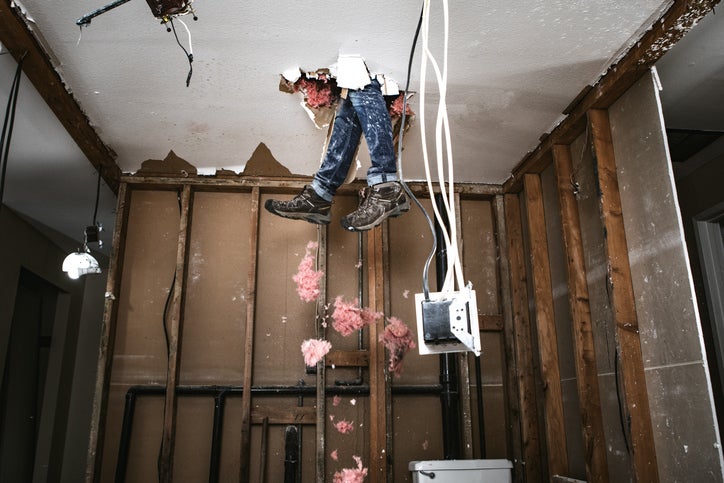In August, existing-home sales were down more than 15% from a year prior, reports the National Association of Realtors. Despite that, home prices managed to climb. And as of August, the median existing home price was $407,100. A year prior, it was $391,700.
Because housing prices are as elevated as they are today, you may be inclined to do what you can to keep your mortgage to a minimum. And that could mean buying a home in need of some work.
Not everyone has the appetite for a fixer-upper. But if you’re someone who’s handy and has the patience, you may find that you can spend less on a home — and a mortgage loan — by purchasing a home that will require a number of projects from the start.
But while you might reap some savings by buying a fixer-upper, there’s one pitfall you might encounter if you do so in today’s market.
Your renovations might cost you more than you bargained for
Buying a home that needs work could mean spending less money on its purchase price, but you’ll have to account for costly repairs and renovations that will add to your tab. And you’ll also need to consider the fact that these days, financing renovations is more expensive than usual.
The reason? The Federal Reserve has been trying to cool inflation by raising interest rates. As such, it’s become more expensive to take out the loans that are commonly used to finance home improvement projects.
More: Check out our picks for the best mortgage lenders
If you’re first buying a place of your own, you may not have enough equity to borrow against your home for immediate improvements and repairs. So in that case, a personal loan could be your next best bet.
But because consumer borrowing rates are up across the board right now, the cost of signing one may be higher than what you’d expect — even if your credit is great. And if you can’t afford to borrow to renovate your home, then you might end up stuck in a property that’s really not in livable condition for months on end.
Be careful with a fixer-upper today
A fixer-upper can be tempting at a time when home prices are through the roof. You might, for example, find a fixer-upper in your target neighborhood for $300,000 while the typical home there that’s move-in ready costs $450,000. If you bring in a contractor and determine that your renovation costs will be $125,000, then that fixer-upper might make financial sense. Plus, that way, you get to put your personal stamp on your new home.
But don’t forget to account for the cost of borrowing to finance your renovations, too. If you end up stuck with a very expensive borrowing rate, it might negate your savings. And then, at that point, you’ll also be dealing with the hassle of a fixer-upper.
Remember, too, that a fixer-upper might cost you in other ways. If you have to pay for temporary housing due to the nature of your repairs (some work might render your new home unlivable), that’s an added expense. Run all of the numbers before making an offer on a home that very clearly needs a lot of work.
Read the full article here














